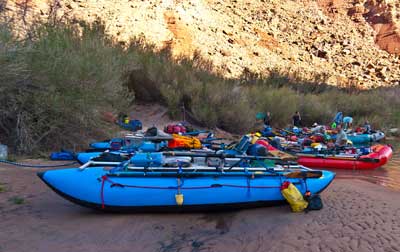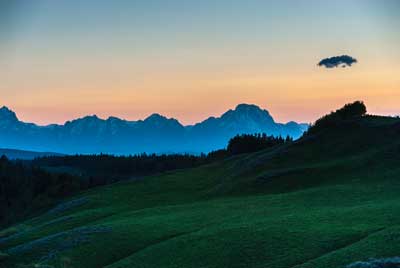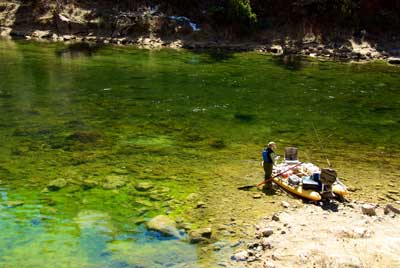

By Tim Gillespie
The Easiest Way To Master The Fretboard!
The series was developed visually, because people natively think visually. You do not have to interpret a picture. You can understand it by looking at it.
And when you combine it with knowledgable text, the meaning and rules of music will jump out at you!
Immediately you will begin to see into the instrument and develop an understanding that is not possible any other way.
This is one of the main reasons this series of books carry a lifetime guarantee. We back up our words with an iron clad policy that has been in place for years!
eBooks are delivered instantly!
In the Fall of 2000, I started writing articles about guitar and theory. Back then the digital world was quite different than it is now. Even though we had left tape based recordings behind several years earlier, we did not have the recording equipment we have now. I used to use four track cassette recorders for my recording studios and eventually bought some electronic devices that could record on a piece of smart media. You can hardly even find that type of memory anymore. I had to record to mp2 files and then convert them to mp3 files or wave files. Programs like GarageBand were around but only for Mac users. I used a number of home recording packages for Window based computers, but they were pretty basic back then. Getting another program to interact with your files was difficult at best. We did have some professional solutions but consumer products were basic, not very polished or did not play with other devices very well.
At the time it was pretty exciting because all of this emerging technology opened doors that were never there before. Now we had a way to actually record sounds and even create songs that we could then upload to our ipods. Iphones would not show up for a number of years yet. Looking back it seems like it all happened so quickly. But when I think back to that time, I have a hard time even locating any digital files I created with those old programs. Not sure what happened to those songs when those old programs went by the wayside. I probably have a bunch of old mp2 files somewhere. I do still have a case full of old cassettes I recorded songs on that would later be remastered. But I have no machine to play them on anymore. I have been taking some of them down and have them recorded on CD's so I can still listen to them again.
The point is things are totally different today. We have more equipment that wants to work together than we have ever had. And putting together mixes is easier and more fun than ever. One of the things I have been doing over the last few years is remaking my recording studio and integrating it into my daily workout with my guitars. Yes I still do practice daily. But I will admit my routine has changed quite a bit. I used to have plenty of left over hours for scale practice at the end of every week. But even that has changed. Now I start out with 2 ½ to 3 hours of songs. There is such a body of work to go through that it takes at least two hours to play most songs twice. In fact I cannot play the standard song set completely in three hours. But that is because there is still some need to take each song apart and work on all the little details. And I am very happy to say that the new recording setup works great for isolating and working on specific parts of songs. And when I am ready to at last record some songs to hear how I am singing and playing together, the system will do it with a simple press of a single button.
It has never been easier to record yourself and check to see how things are coming along. And by checking now and again, you give yourself a very real reality check. Nothing hides from the recording and if you have a pair of excellent headphones, you can pick up every little irritating detail. I want to go over the whole setup and show you all what my system looks like now. Hopefully we can do that pretty soon.
In 2011, I switched my entire office over to Apple which meant almost all new software. It took about a year to get settled into my new environment, but the change was not too difficult. I still keep a single Windows workstation in my office, but it get little use these days. The point is anything I will tell you about software on my Apple systems can easily be duplicated on a Windows system today, including a first rate sequencer, which I consider a must. In fact if I were going to put together a recording system on a Windows system, I think I would just go straight to Pro Tools and jump in with both feet. Pro Tools is a great mix of software, but it is more expensive.
But before we go into that I should probably back up and explain what I have been doing lately. Several years ago my workload became so large that I did not have the time to do anything but try and keep up. My development time became anywhere from 8 to 16 hours a day. I set some goals to hit and gave myself enough time to do it, but it took all my time for those years. The results were definitely worth the effort and book sales were more or less a consistent thing. Once my new company was built out and functioning well enough, I found I could take some time off and go have some fun. So I did and in the process I set up some additional facets of the company. I was able to add a photography site where I could sell my photographic work. You can see that at this link. http://www.theflatirons.com/

My 16', 28 inch tubes, whitewater boat that was floating in the river when I left it the night before.
I also was able to consult with a number of companies that needed the kind of web based systems I was working on. This gave me quite a bit of flexibility in my daily and weekly schedule and I was able to take advantage of it. By this time my new hobby of whitewater was in full swing and I was under the tutelage of a very wise and advanced whitewater captain. Soon invitations to row all sorts of rivers were coming up every few months. I was making regular trips to Idaho and Montana as well as Utah and several Colorado locations. In 2011 I was asked to join a team that was going to run 280 miles of the Colorado river through the Grand Canyon. The usual run is 216 miles from Lee's Ferry to Diamond Creek, but on this trip we went all the way to Pierce's Ferry. There is nothing like popping out the far end of the Grand Canyon in the Grand Wash. Watching it turn into flat desert from deep, high canyon is amazing in reverse. But still amazing.
During this time something weird happened to me. I got burned out with my guitar. I practiced technique so much that nothing really excited me anymore. I had no intention of doing music half way as some casual hobby. I was either going to do it all the way or not at all. So I took some time off as I tried to figure out how to motivate myself. After a while I did not bring a guitar with me and I did not play when asked on some of these trips. I would watch some of my friends play and thought that I did not want to play if it was not going to be very serious. And most of those guys were just playing some simple songs they learned a long time ago and never practiced any more. Now they just played them when they had some spare time and it was hardly inspiring. So I focused on hiking and photography, which I love too.

Sunset overlooking Grand Teton National Park from the beaver ponds at Togwotee Pass, Wyoming
It was a very rich time for me and I learned lots of new skills and had a really great time. But I never quit thinking about the music that inspires me and my love for just playing and singing. Shortly after the Grand Canyon trip, the person who accompanied me on the trip asked me if I would be interested in playing in a small group of friends that were going to get together every few weeks to just show up and play. I hesitated at first, but then agreed to try it. We started off playing some very easy songs that would allow us to get to know each other's styles. There were five or six guys at first and since there was a wide variety of skill levels present, we all basically played the same thing. That was actually a great way of generating a lot of white noise. So much of the sound cancelled itself out and often times as we played the song, different rhythm centers would show up. So I was not sure which one to join in and reinforce. Eventually we got that under control and everyone started playing the same song at the same time.
Within a few months there were only three of us left. One by one the others quit coming and we were left with a core of guitarists that wanted to meet every week and work things out. For the first few months, it was all about getting everyone on the same page. It took me a few weeks to be able to sing and play anything other than simple strumming patterns again. But soon enough we were playing songs all the way through without the recordings backing us up. It took even longer for the secondary guitar parts to show up. But really it all happened fairly fast. Within six months my skills were roaring back and I was quickly gaining some of my old form.
But in order for this group to really work, I had to change my skill set. With the three guitarists we had, we really did not have a rhythm section. Myself and another guy have 30 years of experience each, but mostly as lead guitarists. The third person is a highly successful business person that is trying to make music a bigger part of his life. Translation: He does not play rhythm guitar any better than we did.

My business coach tying on a new fly, on the banks of the ultra clean Green River through Flaming Gorge National Recreation Area, Utah.
So something had to change. Mind you I was already burnt out and looking for a way to energize my music. At about the same time I had decided I needed to change things up a bit. I did not want to practice the same way, instead I wanted to do something entirely new. So I decided to turn myself into a rhythm guitarist. Now I have played rhythm guitar for many years, but never exclusively. Now it was going to be my responsibility to keep the rhythm going all the time. The nice thing is that rhythm guitar goes with singing very well and even made it a little easier. It turns out that was a very important detail in making this new group work. And as a by-product, I found out I really enjoy playing rhythm guitar rather than focusing on lead. It took care of mixing things up, gave me something new to think about and the third guitarist and myself now hold down the rhythm section together. He is coming on now and sometimes holds it down by himself. All in all, a very cool solution and everyone seems to be happy.
So what did that do for my playing? Well it super charged it again. I am once again very excited about what I am doing musically. I have new challenges that keep me interested and my playing time once again is hitting three hours a day, sometimes climbing to over four hours. We only play as a group once a week for now, but I am playing every day and starting to record again.
It took about six months to get most of the rust off, so to speak. At first my lead lines within the rhythm playing were weak and simple. But now that has come around and some of my lead work on “The Thrill Is Gone” is good. Most of the 20 songs I am playing regularly are well in place now and polishing up nicely. In fact all aspects of my playing and singing are showing consistent signs of growth. We are starting to play small engagements now, mostly family stuff and river trips, and the results are encouraging. The best part is a nice sound is starting to develop that is hand crafted, solid and allows us to feel good about what we are doing. The easy songs like Margaritaville, Tequila Sunrise, Willin, Melissa and others are all in place and the more difficult ones like For The Summer, A Long December and Wooden Ships will be soon, but still need some time.
Along the way, I was still able to re release all the eBooks with a better, more compatible format and now people are starting to notice there is a full library of scale and chord ebooks available for any computer with a browser. We deliver them in real time now too, which is better for everyone. One thing I noticed during the latest round of site redevelopment is how many of the people / companies that I had links with have gone out of business. Most of them are gone. Over time a big part of the music landscape has changed and I only noticed it when I started reviewing the existing links.
So in the coming months I hope to follow up on this start with some interesting articles. I would like to start with a tour of my studio, equipment and approach and go over some audio interfaces. Talk a little about how they can help you hone your own music and give you a sense of satisfaction. We will revisit the music dealer scene and try and address whatever is on your minds. That said, there is a new form on line you can use if you would like to suggest a topic you are interested in or make a comment.
Here is the link. https://uncletim.com/forms/newsletter.htm
So in the next few months I hope we can get back into some interesting discussions.
Here is one musical point I would like to make just to get started. We were playing a progression of A minor, D 7 and E minor. The question came up about what key it is in. I briefly ran a couple of leads and found out the progression responds to the E minor scale. Of course that means the one sharp is an F#. One of the guys was telling me that it can't be in E minor because he was playing an A minor pentatonic scale over the piece and it fit perfectly. I thought about it for a minute and agreed that it would fit nicely, but the song was still in E minor. How can that be, he asked. The answer is actually quite easy.
E minor Diatonic contains these notes; E, F#, G, A, B, C, D
A minor Diatonic contains these notes: A, B, C, D, E, F, G.
A minor Pentatonic contains A, C, D, E, G.
The two and six notes are left out on the minor Pentatonic form. In a major key it would be the four and seven notes.
So A minor Pentatonic contains five of the notes in E minor Diatonic, but what is more important is the scale contains none of the notes that would cause it to differ from E minor Diatonic, namely the F#, so you can play the A minor Pentatonic because it is a subset of the actual key, however, it does not contain the one note that would stand out like a sore thumb, the F#. So it fits!
It also illustrates another interesting point. Don't use Pentatonic scales to figure out Diatonic keys. Use Diatonic scales because they contain all the notes of the key, not just some. The Pentatonic scales just confuse people because they do not contain all of the applicable notes, so they have a masking effect. Sure they can be easier to construct leads out of (because there are less notes and they are spaced farther apart), but keys are stated in Diatonic terms, not Pentatonic. Diatonic scales are the standard! Just an interesting point.
For anyone paying attention to all the changes to the website this month, we rewrote most pages to be viewable on any device you use. If anyone uses tablets or phones to view this newsletter, please let me know how it looks and feels. This is new to us and we could use some feedback on how it is working.
Thanks again, -Tim